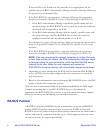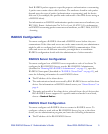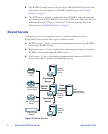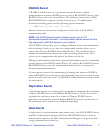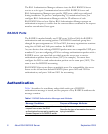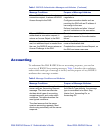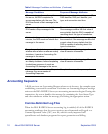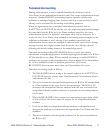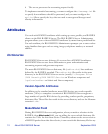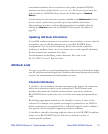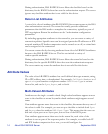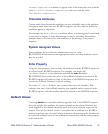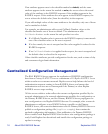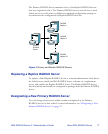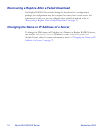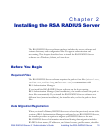12 About RSA RADIUS Server September 2005
6 The server processes the accounting request locally.
To implement tunneled accounting, you must configure the
classmap.ini file
to specify how attributes should be presented, and you must configure the
spi.ini file to specify the keys that are used to encrypt and decrypt users’
identity information.
Attributes
You work with RADIUS attributes while setting up users, profiles, and RADIUS
clients on the RSA RADIUS Server. The RSA RADIUS Server Administrator
program allows you to choose RADIUS attributes by name from a predefined list.
For each attribute, the RSA RADIUS Administrator prompts you to enter values
using familiar data types such as string, integer, telephone number, or network
address.
Dictionaries
RSA RADIUS Server uses dictionary files to store lists of RADIUS attributes.
RSA RADIUS Server uses these dictionaries to parse authentication and
accounting requests and generate responses.
The main RSA RADIUS Server dictionary file (
radius.dct) lists attributes
defined by the RADIUS standard. The
radius.dct file resides in the same
directory as the RSA RADIUS Server service (usually
C:\Program Files
\RSA Security\RSA RADIUS\Service
on Windows computers and
/opt/rsa/radius on Solaris and Linux computers).
Vendor-Specific Attributes
In addition to the standard attributes, many RAS devices use vendor-specific
attributes (VSAs) to complete a connection. RSA RADIUS Server supports a
large number of specific RAS devices by providing vendor-specific, proprietary
dictionary files. These files also reside in the server directory and use the filename
extension
.dct.
Make/Model Field
During RSA RADIUS Server configuration, when you make a selection in the
RADIUS client
Make/model field, you are telling the server which dictionary file
contains the VSAs for this client device. Thereafter, whenever the server receives
a RADIUS packet from this client device, it can consult this dictionary file for any



